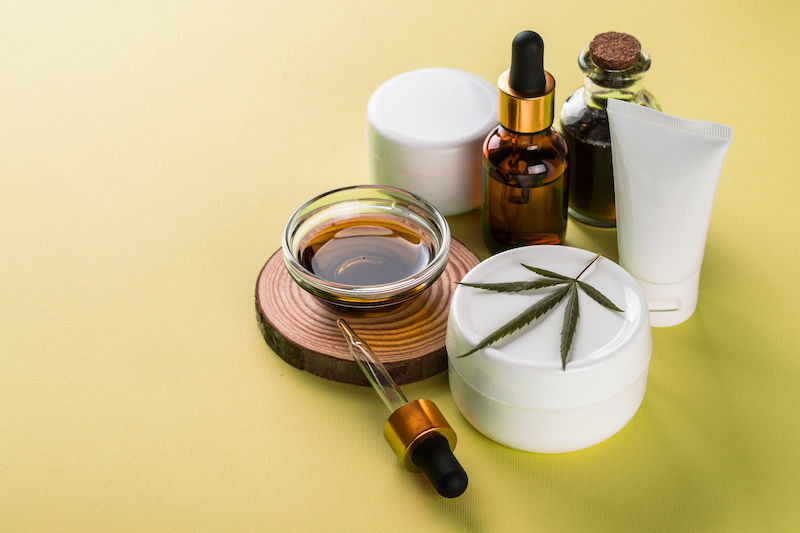How Much Should You Be Budgeting For Cannabis Marketing?
- Decater Collins
- May 13, 2022
- 7 min read
Cannabis businesses are quickly learning that in order to stay ahead of the competition, they need to be putting a fair amount of money into marketing. But with such a new and rapidly growing industry, it can be tough to figure out exactly how much you should be budgeting and where you should be spending that money. Here we will outline some basic cannabis marketing tips and give you a few pointers on how to allocate your marketing budget.

Cannabis advertising is still in its infancy, so there are many grey areas when it comes to what's acceptable and what's not. However, that doesn't mean that businesses shouldn't be preparing for future regulation changes. And it also is no reason to throw up your hands and ignore marketing altogether. Those companies that invest in their brand and create a strategic marketing approach will be the ones that connect with their customers and earn loyalty and recognition in the marketplace, which will be invaluable assets no matter what the future brings.
In this blog post, we'll discuss some general best practices for cannabis marketing and how to budget for it.
The Challenges Of Marketing Cannabis
The cannabis industry is growing rapidly, but marketing it comes with a unique set of challenges. Since cannabis is still illegal on a federal level, businesses in the cannabis industry have to be creative with their marketing strategies.
One challenge is that most traditional advertising platforms will not allow cannabis businesses to advertise. Another obstacle is that the cannabis industry is still relatively new, so many people don’t know much about it. This makes it difficult to create effective marketing campaigns that educate people about cannabis and its benefits.
But the most common reason I hear from business owners hesitant to invest in any real way in marketing is that, unlike traditional businesses, it's not possible to write off marketing as a business expense when you're selling cannabis products. It's likely that as long as cannabis is listed as a Schedule I drug, companies in the cannabis industry can't take advantage of many common tax deductions, including deductions for marketing and advertising expenses.
I agree this is lousy. But it's a hurdle that is shared by every cannabis licensed business, and so it doesn't change anything fundamental about the necessity of marketing. If you think you can (or must) get away without a real marketing budget, then the reality is your going to be out-competed by companies that do make the investment, of both time and money, in their branding and advertising.
So stop complaining and start marketing.
Cannabis Marketing 101: The First Step Is Defining Your Goals
Before you can create a marketing budget, you need to first determine your business’s goals. What do you want to achieve with your marketing efforts? Increased brand awareness? More website traffic? Greater customer engagement? Once you know what your goals are, you can then start allocating funds to the various channels that will help you reach them.
For example, if you want to generate more website traffic, you might allocate more funds to online advertising or search engine optimization. If you want to increase brand awareness, you might invest in social media marketing or content creation. Determining your goals is essential in helping you focus on the tactics and strategies that are most likely to help you meet your objectives.
The Rule Of Thumb When It Comes To Marketing Budgets
There is no one-size-fits-all answer to this question, as the amount you should spend on marketing will vary depending on your industry, business model, and other factors. However, a good rule of thumb is to allocate somewhere between 8 and 12 percent of your revenue to marketing.

This will allow you to allocate enough funds to effectively market your business, while still leaving room for other important expenses such as employee salaries, rent, and product development. It's important to note that you should always adjust your marketing budget as needed, depending on how your business is performing.
It should be noted that this figure is for companies selling directly to consumers. For businesses that are primarily B2B, such as cannabis services companies or farms that sell flower through dispensaries, that figure might be lower, as low as 2-5 percent of your revenue. This number is also targeted at companies in their first five years of operation. Over time, that number will also be likely to decrease over time, hopefully as your revenue grows as your brand becomes better established.
Obviously, these numbers are drawn from businesses across every industry and may not address the specifics of the cannabis industry. But there should be several important takeaways as you develop your own marketing strategy. Number one, when you're just starting out, it's imperative that you invest heavily in your marketing, and that you figure the cost into your business plan from the outset. This should be obvious, but a failure to account for marketing in the early going is probably the biggest mistake I see on a regular basis.
Second, farms and producers that sell through dispensaries are in a unique situation. Because the legal cannabis market is so new, and so many customers are either unfamiliar with cannabis altogether or are used to the legacy market in which there was really very little choice, there is a huge dependency on budtenders and dispensaries to educate them on what products are most desirable. This means that your real customer may be the dispensary, rather than the end consumer. This can impact both your marketing strategy and how you budget for it.
This bleeds into the next important realization, which is that because the cannabis market is so new, we're still in the process of figuring out what business models are most effective, what the consumer will respond to, and more. The hard and fast rules of traditional marketing will not necessarily apply to cannabis. This means ideally, you should be creative, try a bunch of different things, and see what works and what doesn't.
Of course, for most new businesses, every penny counts, so you won't have this luxury of experimentation. In this case, you'll want to plan and research carefully and figure out an approach that seems likely to work, but don't just assume that what works for a traditional business will work for you.
Ultimately, while the specifics of your marketing plan and the exact percentage of your budget you choose to invest in marketing can vary, if you fail to take marketing seriously and put your money where your mouth is, then you're setting yourself up for failure.
Tactics To Stay Within Your Cannabis Marketing Budget
One of the most important aspects of staying within your marketing budget is creating and adhering to a main budget. This budget should be made up of smaller, more manageable budgets that you can keep track of and adjust as needed. This could include things like social media, website design and development, online advertising, and so on. Within each of these categories, you can then create more specific budgets that fit your needs.
Within your main budget, it’s critical to consider your overall marketing goals and allocate funds accordingly. For example, if you want to focus on increasing website traffic, allocate more money toward digital ads. Or, if you’re looking to improve brand awareness, put more money into PR and content marketing.
An important way to stay within your marketing budget is to assign a specific amount to each campaign in advance. This will help you to avoid overspending on any one campaign and will force you to be more strategic in your spending. Additionally, it’s important to track your ROI closely so that you can determine which campaigns are the most successful and allocate more money to those in the future (see more on marketing ROI in the next section).
Another keyword in marketing is FREE. There are a number of marketing tactics that can be used at little or no cost. Researching and leveraging these tactics is essential for small businesses that want to compete with larger companies.

Some low-cost marketing tactics include using social media, content marketing, and email marketing. These tactics can be very effective when used correctly, and they don’t require a lot of money to get started. Additionally, businesses can use competitively priced marketing vendors to help with their marketing efforts. This can be a huge money saver when compared with trying to do everything in-house. You may think that hiring a professional marketing agency is expensive, but when you compare it to the cost of hiring your own marketing lead, or trying to do everything yourself, you'll find working with an agency on a part-time basis can be much more cost effective.
It also helps to avoid having to pay twice for something. A lot of new business balk at the cost of a fully functional website or professional logo design, and so they turn to a budget option. It usually isn’t long before they realize they should have invested in the professional to begin with, and now they need to spend more to fix the problem than if they had just made the investment to begin with.
At the end of the day, it’s essential that before you start spending money on marketing, you have a plan, and you have a reasonable idea of how that plan can be successful. Then keep track of where you spend your money, figure out how effective each approach is, and when you don’t get the results you were hoping for, be ready with a plan B.
Partner With The Hood Collective For Your Cannabis Marketing
If you're looking for help with your cannabis marketing, look no further than The Hood Collective. We have years of experience in the industry, and we're passionate about helping cannabis businesses succeed. Whether you need help with a full marketing strategy, or have a single job or event in mind, our team of digital marketing and branding professionals are a cost effective solution.
Get in touch today to schedule a free consultation.

Comments